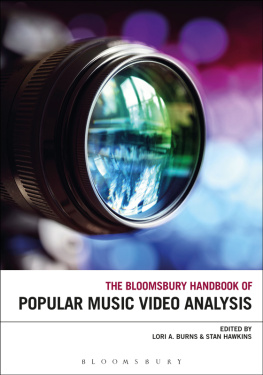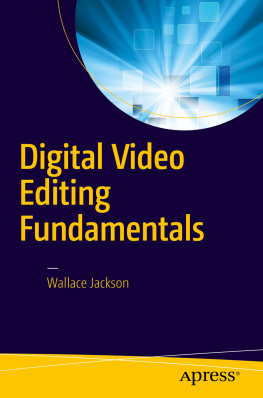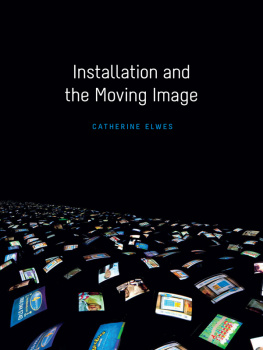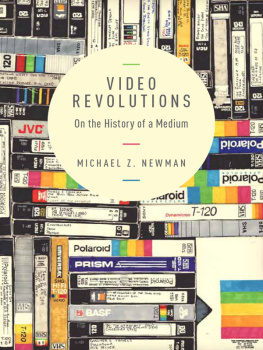VIDEO ART HISTORICIZED
Video art emerged as an art form that from the 1960s and onwards challenged the concept of art hence, art historical practices. From the perspective of artists, critics, and scholars engaged with this new medium, art was seen as too limiting a notion. Important issues were to re-think art as a means for critical investigations and a demand for visual reconsiderations. Likewise, art history was argued to be in crisis and in need of adapting its theories and methods in order to produce interpretations and thereby establish historical sense for moving images as fine art. Yet, as this book argues, video art history has evolved into a discourse clinging to traditional concepts, ideologies, and narrative structures manifested in an increasing body of texts. Video Art Historicized provides a novel, insightful and also challenging re-interpretation of this field by examining the discourse and its own premises. It takes a firm conceptual approach to the material, examining the conceptual, theoretical, and methodological implications that are simultaneously contested by both artists and authors, yet intertwined in both the legitimizing and the historicizing processes of video as art. By engaging art historys most debated concepts (canon, art, and history) this study provides an in-depth investigation of the mechanisms of the historiography of video art. Scrutinizing various narratives on video art, the book emphasizes the profound and widespread hesitations towards, but also the efforts to negotiate, traditional concepts and practices.
By focusing on the politics of this discourse, theoretical issues of gender, nationality, and particular themes in video art, Malin Hedlin Hayden contests the presumptions that inform video art and its history.
Malin Hedlin Hayden is Associate Professor in Art History,
the Department of Culture and Aesthetics, Stockholm University.
STUDIES IN ART HISTORIOGRAPHY
Series Editor: Richard Woodfield,
University of Birmingham, UK
The aim of this series is to support and promote the study of the history and practice of art historical writing focusing on its institutional and conceptual foundations, from the past to the present day in all areas and all periods. Besides addressing the major innovators of the past it also encourages re-thinking ways in which the subject may be written in the future. It ignores the disciplinary boundaries imposed by the Anglophone expression art history and allows and encourages the full range of enquiry that encompasses the visual arts in its broadest sense as well as topics falling within archaeology, anthropology, ethnography and other specialist disciplines and approaches. It welcomes contributions from young and established scholars and is aimed at building an expanded audience for what has hitherto been a much specialized topic of investigation. It complements the work of the Journal of Art Historiography.
Video Art Historicized
Traditions and Negotiations
Malin Hedlin Hayden

First published 2015 by Ashgate Publishing
Published 2016 by Routledge
2 Park Square, Milton Park, Abingdon, Oxon OX14 4RN
711 Third Avenue, New York, NY 10017, USA
Routledge is an imprint of the Taylor & Francis Group, an informa business
Copyright Malin Hedlin Hayden 2015
Malin Hedlin Hayden has asserted her right under the Copyright, Designs and Patents Act, 1988, to be identified as the author of this work.
All rights reserved. No part of this book may be reprinted or reproduced or utilised in any form or by any electronic, mechanical, or other means, now known or hereafter invented, including photocopying and recording, or in any information storage or retrieval system, without permission in writing from the publishers.
Notice:
Product or corporate names may be trademarks or registered trademarks, and are used only for identification and explanation without intent to infringe.
British Library Cataloguing in Publication Data
A catalogue record for this book is available from the British Library
The Library of Congress has cataloged the printed edition as follows:
Hayden, Malin Hedlin.
Video art historicized : traditions and negotiations / By Malin Hedlin Hayden.
pages cm. (Studies in art historiography)
Includes bibliographical references and index.
ISBN 978-1-4724-4975-7 (hardcover : alk. paper) ISBN 978-1-3155-4821-0 (ebook) ISBN 978-1-3170-0195-9 (epub)
1. Video artHistoriography. I. Title.
N6494.V53H39 2015
777.0722dc23
2014040729
ISBN 9781472449757 (hbk)
ISBN 9781315548210 (ebk-PDF)
ISBN 9781317001959 (ebk-ePUB)
CONTENTS
ACKNOWLEDGEMENTS
I thought I would write this book at the speed of light. But I didnt. Reconsiderations, new ideas of how to proceed, what to leave out that is, the ordinary process of research and writing kept the project from a too hasty closure. The initial idea of this project was to focus more on feminist and gender issues, but as my work continued, my focus changed and, instead, I divided it into two different projects. This, then, is what was supposed to be part one, but is now a book of its own.
As an art historian, I often tend to think in relation to art works, and not necessarily those about which I am explicitly writing. This book is not really about art works per se. Yet three works have been crucial for my thinking, visualizing different aspects of what it means to reconsider. Firstly, VALIE EXPORTs Adjungierte Dislokationen (1973) is a work that is intriguing in many ways; here it has worked as a reminder not only to look back but to seriously engage with issues of the past scrutinized in the present tense of thinking (/filming); that is, of constructing art history about past events, in the present, for future readers. Secondly, Robert Morris performance 21.3 (1964) is ingenious and succinct in the way it complicates and disrupts the idea of history as synonymous with the past; revealing that historians cannot return to the actual sites, precise times and situations long gone. And finally, the illustration on by Laura Cottingham After Alfred Barr: Video Art (2001) is a poignant map of the discourse I have investigated. To think in relation to specific art works is neither a theory nor a method, yet it affects the outcomes of intellectual labour at least mine and I hope this will somehow have improved the following.
The research and writing of this book were initially supported by a particularly generous post-doctoral scholarship, 20062009, from the ke Wiberg Foundation, for which I am very grateful. Working then as Senior Lecturer at the Department of Art History, Uppsala University, my most sincere gratitude must therefore also include Hedvig Brander-Jonsson, head of the department, for nominating me. At the same time that I was granted this scholarship, I began working part-time as Senior Lecturer at the Royal College of Fine Arts, Stockholm a context which, in so many ways, challenged my ways of thinking about art and theory, practice and history. I am very grateful for that. While the research extended in time, I changed position once more, finishing the manuscript as Assistant Professor at the Department of Art History, Stockholm University. Still here, I have the best colleagues imaginable, making every work day a privilege. I especially thank my peers Magdalena Holdar and Jessica Sjholm Skrubbe for reading and commenting on versions in various states, pep talks, running companionship and friendship. I am also indebted to Professors Hans Hayden, Tomas Bjrk and Margaretha Rossholm-Lagerlf for engaged reading, advice and suggestions for improvement, and for encouraging me at various stages of the project. In my department, I am also especially thankful to Professor Peter Gillgren (head of the department), Anna Bengtsson-Alzn (head of administration) and Nina Engholm (administrator) for both encouragement and assistance regarding various issues that come with research and publication. Teaching and advising students and PhD candidates provides me with continuous and highly valued situations of self-improvement and rethinkings, without which scholarly life would be not only tedious but also lonely.



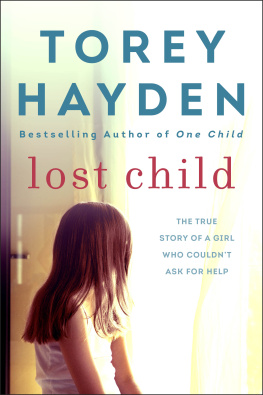
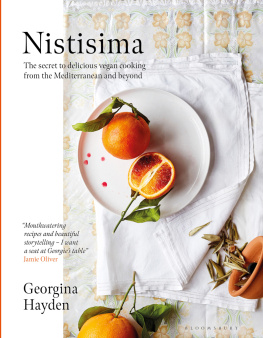
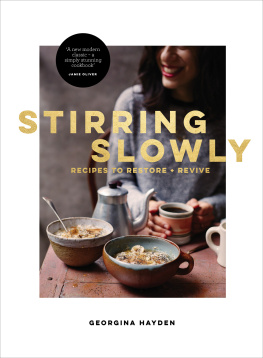
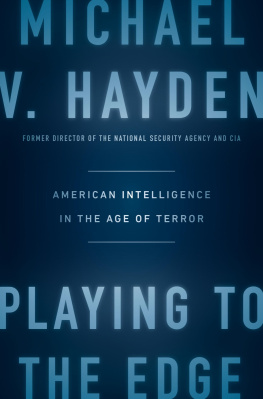
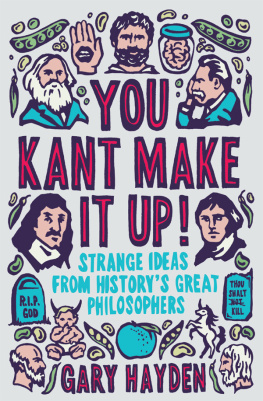


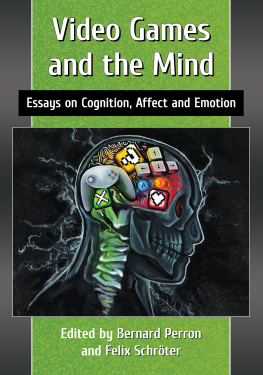

![Mark J. P. Wolf (editor) - Encyclopedia of Video Games: The Culture, Technology, and Art of Gaming [3 volumes]](/uploads/posts/book/279290/thumbs/mark-j-p-wolf-editor-encyclopedia-of-video.jpg)
